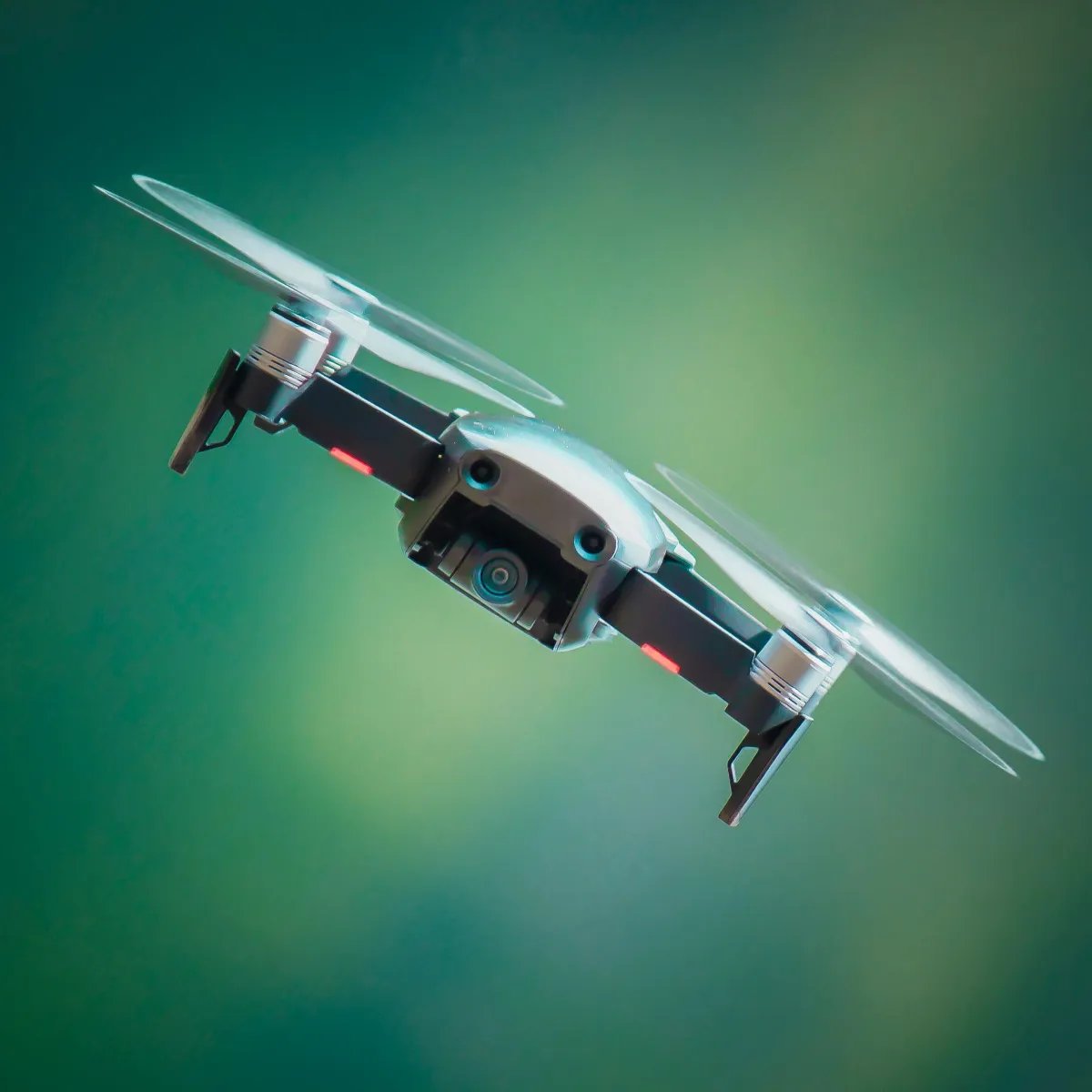
Can Drone Propellers Hurt You? - Risks and Safety Tips
Welcome to the exciting world of drones, where safety is our top priority. I am here to provide insights into a critical query: Can drone propellers hurt you? The short answer is yes. Drone propellers can cause small cuts or bruises. More serious injuries are deep cuts requiring stitches, loss of an eye or finger, and concussion.
Understanding How the Drone Propellers Work
Drone propellers work like the wings of an airplane but spin in a circular motion. As they spin, they create changes in air pressure called thrust that pushes the drone forward or upward, allowing it to fly. The quicker the propellers rotate, the greater thrust they produce. Propeller performance involves factors like the shape of the blades, the materials used, and how well they convert power into thrust.
What Are Drone Propellers Made of?
Drone propellers are the wings of a drone, helping it soar through the air. Propeller materials like carbon fiber, plastic polymers, and composites are lightweight and sturdy. Each material has unique qualities that affect weight, strength, flexibility, and flight performance.
Carbon Fiber Propellers
Carbon fiber propellers strike a balance between weight and strength. They have a reputation for durability and enhance a drone's overall agility.
Plastic Polymers Propellers
Plastic propellers are cost-effective and come in a variety of designs. While not as robust as carbon fiber, they offer flexibility and adaptability.
Composite Materials Propellers
Composite propellers blend different materials to harness the strengths of each. This versatility allows for customized propeller designs catering to specific drone functionalities.
Types of Drone Propellers
Drones can have different types of propellers designed for specific jobs. Some are fixed-pitch, simple, and cost-effective. Others are variable-pitch, giving more control over the drone's performance. The number of blades on a propeller can significantly influence a drone's flight characteristics. Knowing these differences is important for safe drone flying.
How Fast Does a Drone Propeller Spin?
Drones can have different speeds depending on their type and what they're used for. The speed of a drone's propellers is measured in RPM, telling us how many times it spins in a minute. The rotational speed depends on the size of the propellers, pitch, how strong the motor is, and the overall design of the drone.
Consumer drones, which are used for recreational purposes and aerial photography, typically have propeller speeds ranging from around 5,000 to 10,000 revolutions per minute (RPM). 5,000 RPM is 83 spins per second. 10,000 RPM is around 166 spins per second.
Larger drones have usually higher propeller rotation raging around 12,000 RPM which is 200 spins per second. Racing drones, designed for high-speed maneuvers, can have propeller speeds exceeding 30,000 RPM. 30,000 RPM is exactly 500 spins per second.
When you're flying a drone, always remember to be careful. High-speed spinning propellers can be dangerous, so it's crucial to follow the safety rules. Keep a safe distance, and be aware of the risks to avoid accidents.
Potential Risks
High-Speed Rotation
Drone propellers spin very fast, and this speed can be risky. Even small drones with smaller propellers can cause cuts and scrapes if they touch your skin. So, it's crucial to understand these potential risks.
Impact on Human Skin
One big concern is the danger to your skin. Drone propellers can hurt you if they touch your eyes or skin. That's why we need to focus on keeping our eyes and skin safe by taking precautions.
Can drone propellers hurt you? - Injuries and Accidents
Common Scenarios
Accidents often happen when people forget about safety rules.
Flying drones close to the ground increases the risk of propellers coming into contact with people, leading to injuries.
Operating drones in crowded areas without enough space for maneuvering poses a threat to bystanders.
Attempting complex and risky maneuvers without proper training may result in a loss of control and accidents.
Trying to retrieve the drone stuck in the tree may pose a risk of concussion or more serious head injury.
Catching the drone with your hands to prevent the crash may lead to injuries.
Drone-Related Injuries: Insights from NEISS Data
Researchers from the University of Florida looked at data from the NEISS database for drone-related injuries from 2015 to 2019. They found 89 cases using the search term "drone" in patient stories. Patients below 18 were considered kids, and those 18 and above were adults.
Using NEISS and SPSS's complex samples function, they estimated a total of 4,250 drone-related injuries from 2015 to 2020. Of the injured, 21% were under 18, and 84% were male.
Most injuries were:
deep cuts and tears in the skin (72%),
bruises (10%),
strains/sprains (5%),
internal injuries (5%).
The body parts most affected were fingers (56%), head (24%), lower extremities (14%), and trunk (6%). The majority (95%) of patients were treated and released. There was one fatality—electrocution during an attempt to retrieve a drone entangled in power lines with a metal pole.
Selected NEISS cases:
"A 21-month-old girl was hit in her right eye by a drone."
"29-year-old man suffered electrical burns while untangling a drone from wires."
"40-year-old man struck in the head by a flying drone."
"31-year-old man injured his finger by getting caught in drone blades, leading to lacerations."
These cases show the different ways people can get hurt by drones. Everyone must be extra careful and follow safety rules.
Can drone propellers hurt you? - Safety Measures
Safe Distance Guidelines
Always keep a safe distance from drone propellers. Designating no-fly zones in busy areas adds an extra layer of protection. Following these rules ensures everyone stays safe when flying drones.
Protective Gear Recommendations
Wearing protective gear, like gloves, long sleeves, and safety glasses, is super important. This gear helps reduce the risk of injuries while flying drones. Propeller guards are also a great way to protect your drone and others.
Pre-flight Checks and Maintenance
Before flying, check your drone's propellers for any damage. If you see any cracks or problems, fix them right away. Replacing damaged propellers prevents potential malfunctions that could lead to accidents.
Best Practices for Drone Operators
Operator Training
To fly drones safely, you need proper training. Understanding different flight modes and what they do helps you make good decisions while flying.
Emergency Protocols
Know what to do in emergencies. Having a plan for unexpected situations, like landing a malfunctioning drone, is crucial.
What to Do If an Injury Occurs
If someone gets hurt by a drone, here's what to do:
Seek Medical Attention: Get help from a doctor, especially for eye injuries or deep cuts.
Clean the Wound: If it's a minor cut, wash it gently with mild soap and water.
Apply Antiseptic: Use a special solution to clean the wound and prevent infections.
Use a Sterile Bandage: Cover the cut with a clean bandage to keep it safe.
Pain Management: If it hurts, take over-the-counter pain relievers as directed.
Watch for Infection Signs: Keep an eye out for redness or swelling. If it looks infected, get medical help.
Report the Incident: Tell the authorities what happened. This helps improve safety rules for everyone.
Building Awareness
Public Spaces and Drone Etiquette
Being aware of how and where you fly your drone is essential. Communicating with people around you and making sure they feel safe helps build a positive image of drone pilots.
Addressing Concerns and Fears
Many people have concerns about drones. Talking openly about safety measures and helping others understand how drones work can ease their worries.
Benefits of Responsible Drone Operation
Positive Public Perception
When we fly drones responsibly, it creates a good impression on others. By following safety guidelines and being considerate, we can show that drones are cool and safe.
Legal Implications of Unsafe Operation
If we don't follow the rules, there can be legal consequences. This includes being responsible for any damages or injuries caused by unsafe drone flying.
Conclusion for Can drone propellers hurt you?
In conclusion, while drones are exciting, safety is the key. By following these guidelines, you can enjoy flying drones safely and make sure everyone has a great time.
FAQs: Unraveling Common Concerns
Can drone propellers cause severe injuries? Yes, they can. It's important to follow safety rules and wear protective gear.
How can I determine a safe distance from drone propellers? Stay several feet away, considering the drone's size. It keeps you safe.
Is there specific protective gear recommended for drone enthusiasts? Yes, wear gloves, long sleeves, safety glasses, and propeller guards to reduce injury risks.
What steps should I take if my drone malfunctions mid-flight? Follow emergency plans and land it safely away from people.
How can I address the concerns of people who fear drones? Talk openly, share safety measures, and help them understand the fun and safe side of drones.
Embark on your drone adventures responsibly, stay safe, and have a blast in the thrilling world of flying!

Copyright © Drone Guide Central - All Rights Reserved 2024

